Following text and photos by Kevin Bauman.
The abandoned houses project began innocently enough roughly ten years ago. I actually began photographing abandonment in Detroit in the mid 90’s as a creative outlet, and as a way of satisfying my curiosity with the state of my home town. I had always found it to be amazing, depressing, and perplexing that a once great city could find itself in such great distress, all the while surrounded by such affluence.
Brush Park, on the outskirts of Detroit’s entertainment district was always an area of interest to me. For as long as I can remember the area, housing large houses and mansions, sat largely abandoned just a stones throw away from the Fox Theater, and not far from Wayne State University, the Masonic Theater, and even the central business district. How could an area that was, obviously, once a wealthy enclave in the city become an example of the downfall of American cities?
For years the area had signs advertising the redevelopment that was about to take place. It finally began to happen, with the construction of the new ballpark for the Tigers, and Ford Field for the Lions. New condos and town homes began to appear amidst the rubble of burned out mansions turned apartments. Some of the houses were so large they became “loft condos”. As the entertainment district flourished, and Brush Park began to transform into something new, I realized the other approximately 135 square miles of Detroit was largely ignored. The excitement about Detroit’s “rebirth” took center stage, while much of the rest of the city was becoming largely abandoned. Even Brush Park itself was still largely abandoned, but with the remaining tenants of Brush Park buildings being pushed out, and many of the old houses torn down, I moved on to other areas, where Detroiters were attempting to make a life among abandoned and burned out houses. Often times, the neighborhoods were almost completely abandoned. In these neighborhoods I encountered concerned citizens, packs of wild dogs, 20 foot high piles of toilets, and houses with the facades torn off, filled with garbage.
As the number of images grew, and a documentary style emerged, I switched from mostly black and white, to color, and decided to name the series 100 Abandoned Houses. 100 seemed like a lot, although the number of abandoned houses in Detroit is more like 12,000. Encompassing an area of over 138 square miles, Detroit has enough room to hold the land mass of San Francisco, Boston, and Manhattan Island, yet the population has fallen from close to 2 million citizens, to most likely less than 800,000. With such a dramatic decline, the abandoned house problem is not likely to go away any time soon.
Photographing the houses is something of an obsession, though it can become depressing. Many times I’ve wished I was done with the project, but for I keep coming back to it. Currently the series has more than 100 houses, and I’m sure the number will continue to grow as more houses are abandoned. The series is almost entirely shot on a forty (or more) year old Hasselblad, with one equally old lens, and negative film. In this day of instant everything, in which I shoot almost all of my commercial and editorial work on a digital camera, I’ve found that series seems to work best with my old camera and negative film. It’s a simple way to work with a complex subject. I drive around until I find an area I want to work in. Once there I’ll often wander around with several rolls of film in my pocket and my camera on a tripod, stopping to photograph houses, churches, and any other structure that I find interesting.
Finding interesting houses, warehouses, churches, and other structures is not difficult in Detroit. While it is a very depressed city, with very bad unemployment, crime, and poverty statistics, it’s certainly visually rich. It’s a city in which the building Henry Ford’s assembly line pumped out Model T’s for mass consumption, is crumbling and the placard commemorating the historic significance is covered in overgrowth. Michigan Central Station, which was at the time of its construction, in 1913 by Warren & Wetmore and Reed and Stem, the same firm that designed New York’s Central Station, the tallest train station in the world, now lays empty and condemned to demolition. Numerous abandoned warehouses and factories dot the landscape, and many now resemble prairies more than the neighborhoods they once were. Often times only one or two houses remain in entire blocks. In other blocks all of the houses are abandoned.
It is sadly ironic, that a city with such poverty, and a major homeless problem would have so many abandoned houses. It would seem like cheap empty houses could house poor homeless people, but the situation is difficult. Some of the houses are foreclosed on by the banks that own the mortgages, while others are abandoned after crime, vandalism, and arson drive the occupants out. When the owners decide to get out, selling is not an option. The houses are often run down and surrounded by others in even worse shape. The houses are often worth less than the amount owed on them, and even if they aren’t, it’s possible nobody will buy it. Fixing up houses, and giving them to needy families seems like an obvious solution, but many areas are dangerous, have no grocery stores, and are not patrolled by police. Furthermore maintaining a house in Detroit is not cheap. It’s hot and humid in the summer, and very cold, and often wet, in the winter. Houses, if not maintained, will decay fairly quickly. Some of the more recently abandoned houses were, in fact, Habitat for Humanity types of low income housing. While the idea of housing the poor and homeless in cheap houses, it is much more difficult in practice.
Meanwhile the city continues to empty out at a rapid pace, the unemployment rate continues to climb and houses continue to be abandoned. Areas that were once home to a middle class population made possible by the area’s automotive industry are now decimated by crime, poverty, abandonment, and arson. Detroit’s inability to transform from a manufacturing based economy, to an information or service based economy, while not unusual, has been particularly devastating. The high wages paid by the automotive industry, even for those with out much education, could not be replaced by other industries. Furthermore knowledge base companies did not want to locate or expand in an area with a low rate of education and high crime. The downward spiral has continued for several decades, and shows no signs of stopping.
It is unlikely that Detroit will ever resemble its former self. Instead the area is slowly beginning to accept what it has so long ignored; the past is gone good. Talk of controlled downsizing is now widespread. Ideas like urban farming are gaining traction, and being reported in the mainstream media. And artists and investors are becoming interested in the city due to its low cost housing. As the city changes, it will continue to provide an ever changing and captivating subject matter. The population is changing as groups move out, and new groups of immigrants move in. Pheasants and coyotes can now be found in parts of the city. Areas will continue to be abandoned while other areas will attract entrepreneurial and creative types. While other areas still will continue to be home to those who have long called the city home and simply don’t want to give up yet. Detroit is and will continue to be an intriguing story to myself and many others. There are many stories yet to be told and photographed.

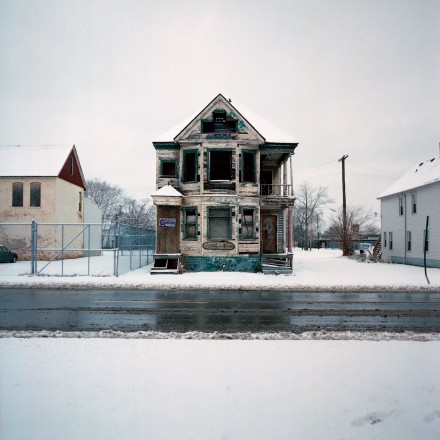










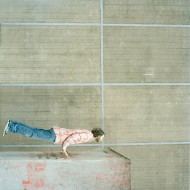
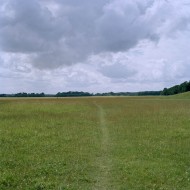
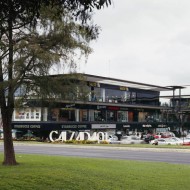

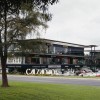





























extra old house ! 🙂
i like it ! like from movie
Kevin’s interest in this subject matter very much echoes my own interests. I absolutely love each house and wish I could could have entered their doorways fifty years ago. Kudos to Kevin Bauman!
Top nuch!
Very nice collection of photos
great article/photos! love the way of PORTRAYING the abandoned houses!
You did a great job with this. Where can I view your entire collection? As an architect it always amazes me how people can abandon a neighborhood of well designed and built houses to move into a vinyl box in the suburbs. I suppose that’s just Detroit’s socioeconomic situation pushing people further and further away.
Woah! I totally loved it!
You can also subscribe to this post comments RSS feed.